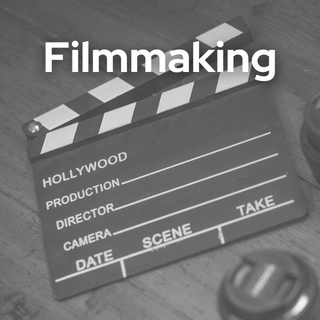Utilizing Atomos and Panasonic Lumix for Behind the Scenes Interviews for “Roadhouse” (2024) at Western Costume Company
A major industry podcast recently used the power of RAW video with the Atomos Ninja and Panasonic Lumix cameras to create a high quality mobile video solution. Oliver Ricketts gives us an inside look at the equipment he used on his recent production for Designing Hollywood.
Designing Hollywood is a podcast about the craftsmanship that makes the movies you love happen- including costume and set design, writing, directing and more. It is produced by Martika Ibarra, Marilyn Vance, and Robert Meyer Burnett. The podcast was founded in 2020. Although it started in a studio setting, the show has since hit the road, filming multiple episodes on location in actual working costume houses.
This has required a mobile video setup that doesn’t sacrifice the quality of the image one might be able to create in a functioning studio. Designing Hollywood turned to Videoguys.com, Atomos and Panasonic Lumix for this solution.

Most recently Designing Hollywood sat down with costume designer Dayna Pink from Amazon’s new film: “Road House” at the world famous Western Costume Company.
The podcast's host, Robert Meyer Burnett, director of Free Enterprise and producer of Star Trek: The Next Generation and Agent Cody Banks, sat down with Dayna Pink to discuss her work on Road House (2024), as well as several other major films including: Crazy Stupid Love, and Bad Boys for Life. Pink shared some details on challenges she faced making stars like Jake Gyllenhal and Connor McGreggor fit into the world of Roadhouse, and how the costuming in the film takes the overall aesthetic to another level.
Of course, when showing off a costume designer's work at a costume house, picture quality and color spectrum are important. The video work used to display this content must be up to par and must accurately reflect the talent on screen as well as the prestige of the location.
This is where Atomos Monitors, paired with Panasonic Lumix cameras, come in. With incredible control over shot composition and color that comes with the Atomos Ninja, the production crew was able to customize three cameras to match the content.

A three camera shoot was set up using the Panasonic Lumix BGH-1, GH5, and the S5 MK II X. Each camera was fed into an Atomos Ninja Monitor. Although these three cameras have distinct differences, Lumix cameras when paired with the Atomos Ninja can achieve recording in the ProRes RAW file format. This process makes it easy to color match and maintain a consistent feel for each angle present in the interview clip.
Better yet, recording for close to two hours over three devices was no problem due to the Atomos Ninja monitors long recording capabilities to Angelbird SSD drives.

Western Costume is both the oldest costume company in the United States and the largest one with approximately 2.5 million costumes on the premises. Western Costume consists of three buildings and boasts 112 years serving the industry. Designing Hollywood was also treated to a video walking tour of the entire costume department from CEO and President of Western Costume, Gilbert Moussally.
This was another area where flexibility was needed from the video gear being used. As a working costume house and a large space overall, Western Costume’s facility is full of areas with vastly different lighting conditions and temperatures, as well as small and large spaces alike. A video solution was needed that could weave into small spaces, but not make the large open areas of the costume house look small. In addition, the ever changing lighting conditions of both fluorescent and LED lights, with overcast shadows and unobstructed light throughout, would need to be addressed in order to create a video that looked cohesive and had continuity.

The solution, again, laid in Atomos and Panasonic LUMIX. Strapped to a double shoulder body mount, Oliver Ricketts, director of photography on this shoot, used a Panasonic LUMIX BGSH-1; a lightweight cinema grade camera perfect for a studio setting or a run-and-gun shoot. The raw picture capabilities of this camera ensured ultimate control over the color profile of the image in post-production.
This camera’s output was fed into an Atomos Ninja to give a clear picture of what was being shot at a glance; essential for any fast-paced shoot. In addition, the color tools on board the Atomos Ninja, and the ability to upload custom LUTS to the monitor itself, were paramount to understanding what the final image would look like while shooting.
A teaser for the full costume house tour can be seen HERE: https://www.youtube.com/watch?v=c5kCaxHDG6A&t=1s
And the full interview with Dayna Pink will be coming soon to the Designing Hollywood Podcast, which can be found HERE: https://youtube.com/playlist?list=PLGYmtexynt_E9R7RJNspB6ux-LyplkBrH&si=WIeadVX0aIkVcvAi











Leave a comment
Please note, comments must be approved before they are published
This site is protected by hCaptcha and the hCaptcha Privacy Policy and Terms of Service apply.